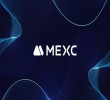7 November 2025
Everything You Need To Know About Matic (Polygon)
In February 2021, Matic announced their expansion for mission and tech scope and becoming Polygon, Ethereum’s Internet of Blockchains. But is that all to the news? Well, as per the LiveMint report, Matic’s recent rally climbed all the way up to one of the top 20 largest Cryptocurrency with a market capitalization of over $14 billion. With the current Crypto market downtrends, Matic, along with the other five digital assets and amongst the top 100 Cryptocurrencies, showed that nothing is lost! Over the span of a year, Matic has spiked nearly 11,000%, including new Matic tokens released monthly. There are about six billion tokens in Circulation, with a maximum supply capped at ten billion MATIC tokens.
Sandeep Nailwal one of the founders of Polygon is also responsible for the India Covid Relief Fund, a Cryptocurrency-based fund dedicated to pandemic relief in India. The fund received around $1.1 billion from Vitalik Buterin, the co-founder of Ethereum. He donated 500 Ether coins and about 50 trillion Shibu Inu coins to the India Covid 19 Relief Fund.
Mark Cuban, a US-based billionaire investor, has also invested in Polygon as a part of his company’s portfolio. Thanks to the increased use of its Blockchain by gaming, non-fungible tokens (NFTs), DeFi (Decentralized Finance), and other marketplaces, Polygon, formerly known as Matic network has witnessed its market cap increase more than tenfold since February.
Everything You Need To Know About Matic (Polygon)
Matic is a made-in-India token, a native token of Polygon, founded in 2017 by three software engineers - Jaynti Kanani, Sandeep Nailwal, and Anurag Arjun. It is an Ethereum token powered by Polygon Network to pay transaction fees and participate in the PoS consensus. Matic Network aims to spur mass adoption of Cryptocurrencies by resolving the scalability difficulties on Blockchain. It renders massive scale to Ethereum by using an adapted version of Plasma with PoS based side chains. The Matic Network is now called Polygon, but the coin powering the network is still called Matic. Furthermore, the project was rebranded to Polygon for the scope of the project’s expansion. It is currently being led by co-founders Jaynti Kanani, Sandeep Nailwal, Anurag Arjun, and Mihailo Bjelic.
The company stated in its post, “Matic strives to achieve a high degree of decentralisation with trust-less and decentralised execution while ensuring near instant transfers, low fees and conducive economics for micro-transactions.”
Thus, Matic empowers companies to build decentralized applications by providing solutions to scaling and usability that exists on the Ethereum Blockchain.
Also Read, Blockchain and Business - Things you need to know
The Features of Matic
- Scalability - Scalability through the decentralized Plasma operator mechanism offers fast, secure, and low-cost transactions on Matic sidechains with finality on the main chain.
- Exceptional Throughput - A sidechain tree architecture can scale to millions of transactions. A single Matic chain handles up to 65k transactions per second.
- User Experience - A smooth UX abstraction from the main chain to Matic chain and WalletConnect support in native mobile apps and SDK.
- Security - The Matic chain(s) operators are themselves Stakers and Delegates in the Matic Network's Proof-of-Stake system.
- Interoperability of Assets - In the near future, Matic Network will make assets on various sidechains across several Blockchains interoperable.
- DeFi Platform in One Place - Matic Sidechains can host multiple protocols that enable comprehensive decentralized finance applications.
The Architecture behind Matic
Blockchain technology is gaining traction with its applications and adoption. Dapps, Decentralized Apps are making huge progress in the Blockchain spectrum; however, the Blockchain ecosystem is unprepared to scale as per the demand. One of the various issues faced by Blockchains is complexity, slow confirmation, and high gas fees. It needs the least decent user experience before hitting mainstream into the mass adoption threshold.
Matic addresses the aforementioned issues and strives to simplify the interaction between the users and the decentralized world. It builds a decentralized platform based on an adapted version of the Plasma framework. It enables faster and low-cost transactions with finality on the main chain. PoS checkpoints are pushed to the Ethereum mainchain, ensuring the system’s quality. This process allows a single Matic sidechain to achieve 2 16 transactions per block theoretically, and in the future, millions of transactions across multiple chains.
Polygon uses Layer 2 side chains on the Ethereum main chains to allow faster and more standard transactions. Users can deposit Ethereum tokens on a smart Polygon bridge contract, interact on the Polygon sidechain, and then withdraw them to the Ethereum main chain. The MATIC token is to used to pay transaction fees and to participate in a stakeholder demonstration agreement.
Polygon provides a variety of modules that the developers can use for their Blockchain to deploy and configure. Additionally, there are two types of chains supported by Polygon: stand-alone chains and secured chains. In a nutshell, stand-alone chains are self-contained Blockchains that are directly compatible with Ethereum, and secured chains rely on a network of professional validators to provide security.
The platform is built to enable a wide range of Blockchain scaling techniques, such as Matic Plasma, zk Rollups, Optimistic Rollups, and Validum Chains. They are aimed to increase the transaction throughput of associated Blockchains while maintaining security and user experience.
Also Read, Everything you need to know about DeFi - Decentralized Finance
Matic use-cases
- DEX - Decentralized exchange
- Gaming Industry
- Atomic Swaps
- Lending Platforms
- Payments
- Liquidity Providers
- Marketplace, and so forth.
Step-by-Step Guide to buying Matic
- Choose a reliable Digital Wallet
- Register and Open an account on a Crypto exchange such as BuyUCoin, WazirX, CoinDCX, Binance, ZebPay, UniSwap, Coinbase, etc.
- Various platforms will ask for KYC and AML. You can even add the 2FA authentication.
- Fill in the details required by the Exchange.
- Ta-da, you are ready to buy Matic!
Conduct thorough research before choosing your digital wallet and Cryptocurrency exchange. See if the features and functions of the platform suit your needs. The factors that you can look for are the reputation of the platform, risk management, Cryptocurrency conversion, trading pairs, security, the technology used, backup features, fees, buy/trade options, licensing and regulation of the exchange, availability, and status in your country, rewards, plans, other applications use like mobile app, customer service, and so forth.
According to Cointelegraph, in seven days till May 17, the company added around 75000 new users to its platform. This figure and the company’s positive impact calls in for a bigger picture in the long run. Its notable commitments and developments are pretty visible with its growing community, and someday it could be a rewarding investment. Matic aka. Polygon has dramatically expanded its vision and scope of the original Matic network by facilitating a suite of tools to its users.
Disclaimer: The author’s views and opinions are for informational purposes only and do not constitute financial, investment, or other advice.






